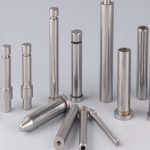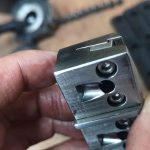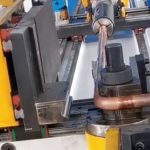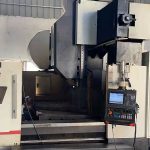Additive Manufacturing Becomes A New Standard In Precision Machining
The miniaturized production of the future requires systems that can deliver prototypes, one-offs and small series quickly and efficiently. This requires systems capable of extremely flexible, intelligent and high-precision production. This need is exacerbated by the trend towards progressive miniaturization in many application areas.Industries such as the pharmaceutical, environmental protection and process engineering industries require small and reliable test systems to work quickly and accurately for micro laboratories. Such systems require the ability to operate precisely and control very small volumes of liquid. Microfluidic channels require the ability to safely move small volumes of liquids containing functional components such as filters and stirrers. Previous production methods have limited the design freedom of such microfluidic channels, and it is even less possible to use these to produce functional substructures. Using innovative additive microfabrication techniques, these obstacles can be overcome without sacrificing quality and accuracy.
(Image courtesy of Nanoscribe)
Another area that requires high-precision structures is the field of optoelectronics. Compared with conventional microelectronics, the amount of data transmission can be increased several times using light. To take advantage of this in optoelectronic device communications, high-efficiency fiber optic cable connections (chip-to-chip interconnects) can be printed using a high-resolution Optical Professional GT system from Nanoscribe (see Figure 1). Tiny 3D polymeric optical waveguides called photonic wire bonds can be used directly to produce silicon-based parts. According to different requirements, the optical interface generated by optimization and adjustment will become an optical multi-chip component. This new technology enables the transmission rate to exceed 5Tbit/s, an unprecedentedly high transmission rate that has become an important milestone in the telecommunications and consumer electronics industries.
Thanks to 3D microprinting, scientists are also entering a new world in the field of mechanical artificial metamaterials. Scientists have predicted specific types of materials at this level about 20 years ago, but have yet to produce these specific microstructures. The internal microstructure of artificial metamaterials (Figure 2) causes them to behave like liquids despite being solid. It is difficult to compress, but deforms easily and has a very low density. In the future, high-strength super-strong materials are expected to be used in the manufacture of automobiles or aircraft. Another research team has produced a mechanical cloak using a Nanoscribe 3D printer (Figure 3). This is a new artificial metamaterial, and if it is used in a “mattress”, the famous Princess of the Pea can sleep sweetly on a pea.
Professional optics GT systems can also be used for maskless lithography in a simple workflow without the additional cost of purchasing additional equipment. This enables the direct lithography of extremely high-precision diffractive optical elements, high-resolution grating structures or unique diffractive spot patterns (such as QR codes) in one step (Figure 4). These can be used as anti-counterfeiting marks in product protection (Figure 5), as the losses to businesses from piracy goods are measured in billions. Often, the various methods of producing these labels require an additional layer of mask to be attached to the product. Therefore, maskless lithography has great potential in the future.
Take Precision To The Extreme
Nanoscribe’s device operates on the basis of two-photon polymerization, using photosensitive materials as raw materials. The liquid resistance is cured by photochemically initiated polymerization. The system uses a near-infrared laser with a wavelength of 780nm, and its photoresist is transparent. The repetition rate of femtosecond pulses is 80 MHz. The absorption of two photons triggers aggregation only at the focal point and not along the beam path. Unexposed material ends up being easily rejected. This true 3D rapid prototyping process solution is stronger than the 500nm laser wavelength and produces complex self-supporting microstructures.
The method is also extremely flexible, as computer-controlled beam steering can directly translate 3D computer-aided models into a variety of complex 3D structures. Another great advantage is that production costs and component complexity are largely unrelated.
The size of the focal spot and the amount of aggregation caused by each pulse is called a voxel (pixel + volume), and it can be controlled by the numerical aperture (NA) of the lens and the laser power. Focusing lenses with high numerical apertures have extremely small pixels, allowing the fabrication of extremely tiny structures. There are two strategies to safely move pixels across the sample. One is to move the sample with a fixed beam, and the high-precision positioning unit uses the fixed beam to move the sample, moving the relevant substrate to the focal point with a very precise trajectory. Through this method, complex structures of arbitrary shapes can be obtained with optimal lateral structure sizes in the submicron range. Another strategy is to fix the sample to move the beam, using a layered construction process to achieve faster production rates. The premise of this strategy is the precise coordination of beam deflection, sample movement, and modulation of laser intensity.
Optimized Structure Size
For the fabrication of mesoscale structures, the immersion laser lithography method developed by Nanoscribe is an established technique that is particularly useful in 3D printing. It is capable of producing high-resolution 3D structures well beyond the working distance of the lens and ensures that the quality remains the same across the entire print height, i.e. the graphic quality is independent of the print height. For best results, the lens is dipped into a liquid photoresist, which becomes the immersion medium.
Immersion lithography produces sharper images in lithographic patterns. The refractive index of the immersion liquid is as high as possible to displace air in the gap between the final lens and the wafer surface. Compared to similar systems that do not use immersion liquids, this system can produce smaller structures because a larger numerical aperture and depth of focus can be obtained.
The depth of focus determines the scope of application and should be sufficient to form a sharp image. Since optimal exposure of the photoresist layer is required, the depth of focus must be large enough. Similar to resolution, the depth of focus depends on the wavelength used, numerical aperture and immersion medium. The biggest advantage of immersion laser lithography is that it is no longer limited by the working distance of the lens. Therefore, the printed structures can reach the millimeter scale. (Image 6)
Print At The Fastest Speed
For optimum performance, a precise galvanic scanner can shift the laser focus while enabling ultra-precise movement in space. The galvanic technology, which has a writing rate of 10mm/s, can speed up layer-by-layer printing by two orders of magnitude, changing the manufacturing speed from minutes to seconds. Adjacent aggregates must be combined intelligently in order to write over a larger area.
If traditional methods are approaching the limit, such as stereolithography at a thickness of 50-150μm, 3D laser lithography is the world. Compared with stereolithography, the resolution is 10-100 times higher. Structural elements below 1 μm are the industry standard with surfaces of optical quality. This requires high resolution and applies to structures with heights ranging from hundreds of nanometers to millimeters.
Another method that uses additive laser writing to produce tiny parts is micro-stereolithography. In micro-stereolithography, the product to be produced is dipped in photoresist and a focused laser beam is used to inscribe the corresponding structures. After one turn of inscription, the part is lowered, the new photoresist will be spread over it, and the laser beam will start working again. The entire aggregation is initiated by one photon. The curing process occurs with the laser beam over the entire photoresist layer. Its polymerization amount is much larger than that of two-photon polymerization. Therefore, the thickness of the monolayer is at least 10 μm, but distances of up to 100 nm can be achieved using two-photon polymerization.Theoretically, two-photon polymerization can also produce slightly smaller structures, but industry demand tends to favor faster writing speeds and produce extremely complex components under 1 cm in size.
Nanoscribe has met this need by offering a new lens with a wider scanning range. Using immersion laser lithography, structures up to 4mm in height can be produced. To meet the demand, the company has specifically developed a photoresist polymerization that uses lower laser power, so it can work quickly to achieve optical quality surfaces.
The new software is best suited for high-speed writing, as larger structures require larger amounts of data. Therefore, a new inscription strategy for directing the laser beam is needed, increasing the system speed by 10%, enabling the inscription of a beautiful dancer statue in under an hour
Link to this article:Additive Manufacturing Becomes A New Standard In Precision Machining
Reprint Statement: If there are no special instructions, all articles on this site are original. Please indicate the source for reprinting:Alloy Wiki,thanks!^^







